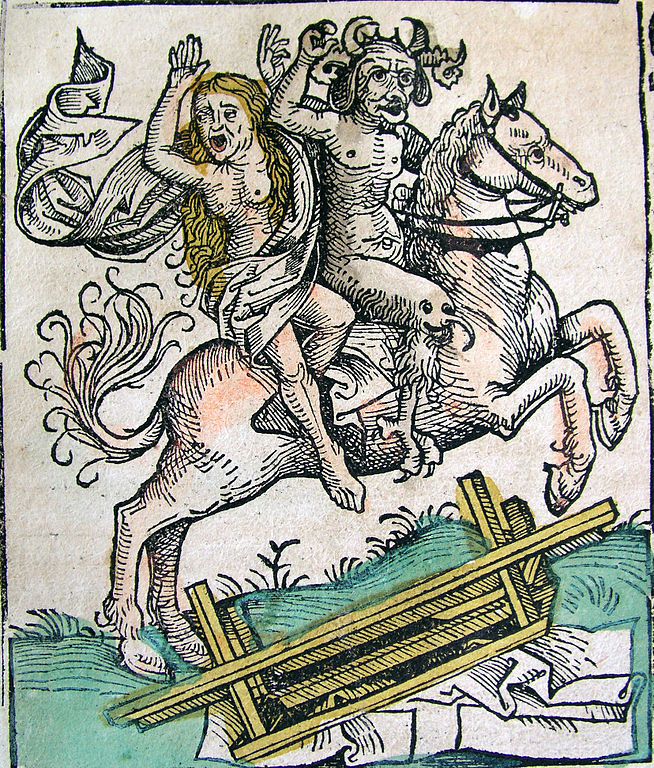Difference between revisions of "Template:POTD protected"
Occultwiki (talk | contribs) |
Occultwiki (talk | contribs) |
||
| Line 1: | Line 1: | ||
{| role="presentation" style="margin:0 3px 3px; width:100%; text-align:left; background-color:transparent; border-collapse: collapse; " | {| role="presentation" style="margin:0 3px 3px; width:100%; text-align:left; background-color:transparent; border-collapse: collapse; " | ||
|style="padding:0 0.9em 0 0;" | [[File: | |style="padding:0 0.9em 0 0;" | [[File:Devil-on-Horseback.jpg|300px]] | ||
|style="padding:0 6px 0 0"| | |style="padding:0 6px 0 0"| | ||
'''[[ | '''[[The Devil]]''' in [[Christianity]] is a deity who became a tempter and a deceiver of mankind after he rebelled against the [[Yahweh|God of Abraham]] in an attempt to become equal to God himself. He is depicted as a [[fallen angel]], who was expelled from Heaven at the beginning of time, before God created the material world, and is in constant opposition to God. The devil is identified with several figures in the [[Bible]] including the serpent in the Garden of Eden, [[Lucifer]], [[Satan]], the tempter of the Gospels, [[Leviathan]], and the dragon in the [[Book of Revelation]]. | ||
Since the early reformation period, the devil was imagined as an increasingly powerful entity, with not only a lack of goodness but also a conscious will against God, his word, and his creation. Simultaneously, some reformists interpreted the devil as a mere metaphor for human's inclination to sin and so downgraded the importance of the devil. While the devil played for most scholars no significant role in the Modern Era, he became more important in contemporary Christianity again. | |||
<p><small> | <p><small>Artist: ''Michael Wolgemut'' and ''Wilhelm Pleydenwurff''</small></p> | ||
[[:Category:Images|'''(More Images)''']] | [[:Category:Images|'''(More Images)''']] | ||
<div class="potd-recent" style="text-align:right;"> | <div class="potd-recent" style="text-align:right;"> | ||
Revision as of 23:06, 14 April 2022

|
The Devil in Christianity is a deity who became a tempter and a deceiver of mankind after he rebelled against the God of Abraham in an attempt to become equal to God himself. He is depicted as a fallen angel, who was expelled from Heaven at the beginning of time, before God created the material world, and is in constant opposition to God. The devil is identified with several figures in the Bible including the serpent in the Garden of Eden, Lucifer, Satan, the tempter of the Gospels, Leviathan, and the dragon in the Book of Revelation. Since the early reformation period, the devil was imagined as an increasingly powerful entity, with not only a lack of goodness but also a conscious will against God, his word, and his creation. Simultaneously, some reformists interpreted the devil as a mere metaphor for human's inclination to sin and so downgraded the importance of the devil. While the devil played for most scholars no significant role in the Modern Era, he became more important in contemporary Christianity again. Artist: Michael Wolgemut and Wilhelm Pleydenwurff |